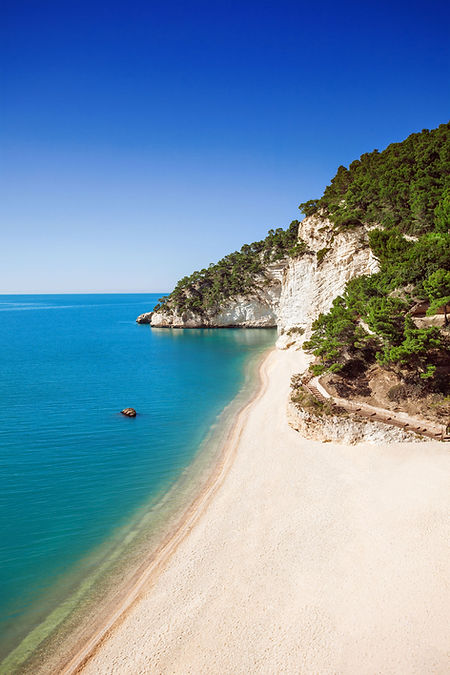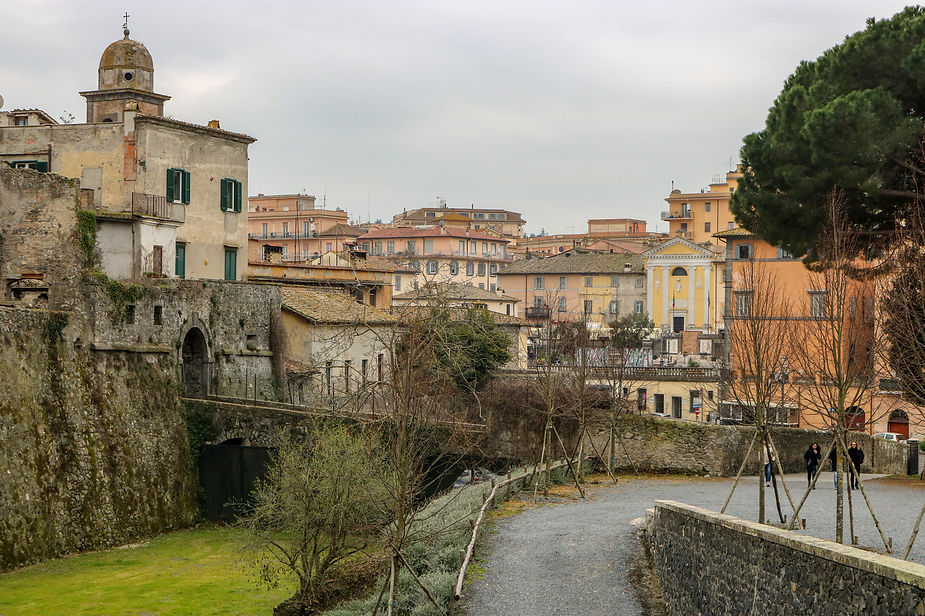Fiery and Inscrutable: Calabria
On arriving in Calabria for the first time, one most likely arrives with preconceived notions of a brutal and harsh reality probably formed by the millions of exiles that left in the past to find work or escape organized crime. I’ve come to Calabria many times, and most recently in 2015 I came on a mission: to honour my father’s memory. I found a land that defiantly persists, without regard for the omnipresent fist of the ‘Ndragheta; that picks itself up and that despite its poverty and the pathetic and brutal attempts on the part of governments to “develop” this southern region, still dazzles with its startling natural beauty.
I wanted to come back; I wanted to explore the wildest and most unspoiled part of Italy; experience more fully this enchanting and least known of the Italian regions.
And when I did, this past September, I found a world of natural wonders, ancient Byzantine churches, memorable Greek relics and dazzling sunsets.
We arrived late, fatigued and unkempt from a long flight that stopped in Rome and then proceeded to Lamezia Terme. The usual delay to pick up the rental car resulted in a long drive down the coast with little light and only the moon to guide us!
We were headed for Tropea and the Villa Paola where we would be spending a few days. My husband’s desperate silence as he drove that late night alerted me to the precariousness of the drive on this steep and winding road. We had travelled it before—-La Costa Degli Dei, or the Coast of the Gods,– a stretch of coast with beautiful beaches, breathtaking views, and a crystal clear sea. But now, in the inky night the road was full of unseen perils and fears; I wondered frantically to what saint I might pray—-something I tend to do in times of rising panic!
Villa Paola, our destination, broke through my growing unease; legend relates that it was San Francesco da Paola who arrived at Tropea in 1464 —at the site where today’s villa stands— and decided that it was to be where a sanctuary would be built: on a small promontory standing above the sea from which, then as now, one could be in perpetual adoration of God and nature.
I recited a few “Hail Mary”s and beseeched San Francesco to guide us on our journey.
We arrived at Villa Paola in the thick of night, safe and sound. Our friends who followed in the car behind us seemed unperturbed by the long treacherous drive!
The bell at the massive doors next to the small church, brought the smiling and welcoming face of a young woman who ushered us into a small cloister from whose central garden emanated the sweet scent of the bergamot.
We followed silently the tap tap of her shoes on the cobbled path that under a vaulted loggia led us to a large open room which served as the reception. Too tired to take much in, we only heard the gentle lap of the ocean waves in the distance as we unpacked the necessary items and fell immediately into bed and into a deep exhausted sleep.
A southern, luminous sun woke us and led us to the terrace overlooking the Tyrrhenian. A vast sweep of a myriad hues of blues greeted us. San Francesco knew what he was doing by setting up house here in this spot. In the distance, the town of Tropea could be seen perched on the rim of a high cliff.
A wonderful beginning to a new adventure.




At the back of my mind, however, fomented the idea of a different kind of adventure. That part of me that is resolutely fearless niggled at my staid, older self, stirring me to embrace something off the beaten path that would take me somewhere I had never been.
It had been a while that I had been musing about visiting the area of the Aspromonte; the romance of the brigands and peasant families that rebelled against rich landowners by stealing their animals and who used the dense, mostly inaccessible mountains as a hiding place had always fascinated me. My imagination was fuelled by a book I had read a few years before, Terroni, by Pino Aprile. Aprile explains, through a series of historical events, how the south of Italy has ended up becoming the “minority” of the country, relegated to a backward condition with respect to the north of the nation and to the rest of Europe, when 150 years earlier, the men of the south were forced into brigandage , a phenomenon of social and political unrest after the unification.
A few months earlier I had also chanced upon the film Via Dell’Aspromonte, La Terra Degli Ultimi, a film by Mimmo Calopresti; a hypnotic and tragic story of a small village in the southern valley of Aspromonte, where, in 1951, a woman dies in childbirth because a doctor fails to arrive on time. No road connects Africo with other villages, all of which are under the control of the local mafia. In the wake of this tragedy, all of Africo’s citizens— including children – abandon their usual occupations and unite to build their own road. The film left an uncomfortable and bitter taste in my mouth. I wanted to know more.

I had known that this rocky massif that covers the southernmost part of the boot, is known to most people only for its connection to the ‘Ndrangheta, and the film had confirmed this. But through further reading I learned that this Aspromonte Region, established as a national park in 1989, was also an area of magnificent waterfalls, forests of gaunt conifers, and at one time the scene for countless battles. The Greeks came to this part of Italy in 1800BC and much later, Garibaldi was defeated here by Italian troops as he attempted to take the Papal states for the newly united Italy. 1. www.theguardian.com/travel/2011/feb/26/aspromonte-national-park-calabria-italy
The lack of tourism here which is part of the great charm of the Aspromonte is what appealed to me the most as I planned a crossing from the Tyrrhenian to the Ionian to visit the town of Gerace. Surely the once Byzantine stronghold that sits perched atop a 500 metre vertical rock would be something to see (and it was) but the crossing itself would be a memorable experience. And yes, it was
We set off early on the second morning of our arrival in Calabria. We knew it would be a long ride. We would barely be caressing the northern tip of the Aspromonte National Park, and not its deep heart, but this was enough for me. We had expected a long ride but the rough one we got had not been part of the plan. We headed south east towards the SP17, confident that our GPS knew where it was taking us. It was all straight sailing for a while, but men being what they are, my husband decided that instead of going back on track when he missed a turn towards the ‘statale’, made a turn onto a road that would prove too be the great adventure of this trip. The further we advanced onto what would soon become a dirt path, the more difficult it seemed to turn back. It alarmed us to realize that we no longer saw other cars. The rough and narrow path we were now traveling on was pockmarked with dents and craters and contorted its way around this densely forested area. Slowly and cautiously we passed eroded cliffs and immense rocky gravel banks which stretched endlessly ahead. In a final attempt to avoid the deep crevices looming ahead of us, our brave friend Filippo stepped out of the car and led the way on foot directing our slow ascent to where we could finally make our way to a paved road and on to the Ionian coast.
Bemused, but much relieved by our odyssey, we were determined to make it back before nightfall.

Our visit to Gerace took us to a town that archeological findings show was inhabited since the Neolithic age. From a Byzantine conquest in the 6th century, and after being conquered by the Saracens, the city then returned to Byzantine rule.
We walked the narrow cobbled streets and visited the ancient crypt of the The Norman Cathedral, the largest religious building in Calabria. Nearby Locri promised a lovely seaside town but the worry of finding ourselves once again having to cross the river Styx hastened our step and hastened us on our way back to Tropea.





The next morning, all apprehensions forgotten and anxious to begin a new adventure, we opted this time for a jaunt down the alluring southern Tyrrhenian coast to Reggio Calabria.
The city of Reggio Calabria does not have either the allure nor the tourist status of Matera and Lecce. It has not been gussied up for tourist consumption, and yet it possesses a particular architectural mix of styles with modern elements (due to having been rebuilt after the last epic earthquake of 1908) and the much more classic designs that endure.
While Reggio Calabria is unlikely to be the first place in Calabria you’d visit, its modern museum is probably its greatest treasure and very much worth seeing. In it are housed some of the greatest vestiges of a rich classical past. It is recognized as among the most prestigious archaeological museums in the world, but its greatest claim to fame, are the two magnificent bronze statues, The Riace Bronzes ( I Bronzi di Riace), discovered in August 1972. These Greek bronze statues were found by two amateur underwater divers. They
were recovered and quickly transported to the National Museum of Reggio Calabria, and there, underwent an initial restoration that permitted the elimination of the layers of concretized sand. Then, new restorations followed in Florence and again in Reggio.




We made our way through the exquisite exhibits and finally arrived at an odd glass chamber where we were ushered in and made to stand for three minutes to be decontaminated before we could be let in to see the Bronzes. They were more than worth the wait. Larger than life, inscrutable, determined and fierce, more godlike than human, they stood in regal disdain staring out across the centuries.


Our stunned silence will give you, reader, a sense of the emotions we felt in seeing these bronze statues.There are no words to convey the emotions.
We left the Museo Nazionale feeling fulfilled, as someone might feel when something of great value is attained; a complex emotion to describe, but one that stays and endures reminding you that you’ve witnessed something timeless and incomparable.
That evening our return to Tropea forced us to cross once again along the foothills of the Aspromonte Mountains, through hill towns and along narrow roadways lined with the small but fragrant bergamot trees. As the dark descended on us and the falling sun could no longer be seen through the trees, our anxiety grew tenfold. We drove through sombre towns, drab and characterless. I glanced hurriedly out the window trying to shut out the stark poverty that stained the walls of the houses. Finally arriving back in Tropea I couldn’t help but think of the severe contrasts of this land.








Calabria is a fascinating fusion of tall, snow tipped mountains and thick luscious forests, white sand beaches and sapphire coast lines and crystal oceans. It is a testament to a glorious and sometimes tragic past and still deploringly marred by the constant presence of organized crime which is deeply embedded in the societal values of this southern region.
But Calabria is still a “somewhere” that must be seen and experienced, contrasts and all. Perhaps it is not for the feint of heart but certainly for the intrepid looking for the uncommon.

Recommended Reading:
Terroni: All That Has Been Done to Ensure That the Italians of the South Became Southerners,
by Pino Aprile (Author),
Translated in English by Ilaria Marra Rosiglioni
To see:
Aspromonte – La terra degli ultimi (2019)
Where to Stay:
Villa Paola
C.da Paola 6 89861 Tropea (VV)
+39 0963 62370 – 0963 663302
https://www.villapaolatropea.it/en/

0



